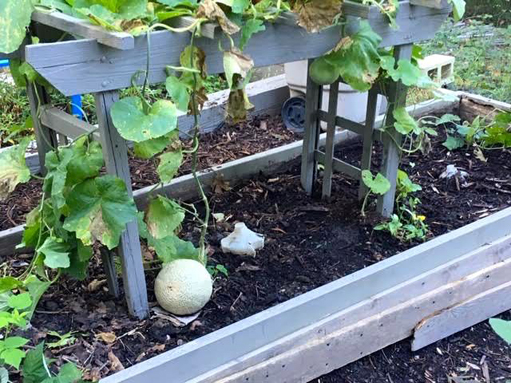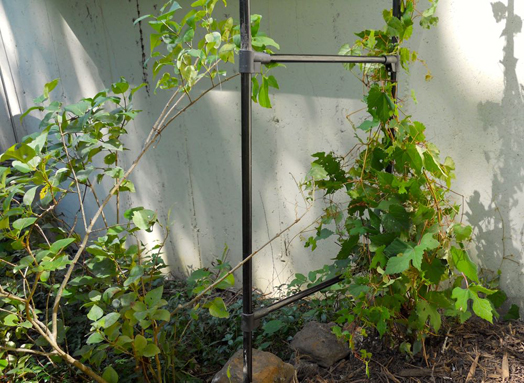October 2018 Gardening Chores

It’s going to seem odd but it is now time to start enjoying garden bounty. With the longest 2018 spring in Missouri recorded history, produce is appearing in my garden. Finally.
1. From cherry tomatoes, onions, a variety of herbs and a volunteer cantaloupe, I don’t have much to gather this year but I will enjoy what I have. Besides harvesting, this is the time to freeze extras for later use.
2. Pick herbs before they have flowered to capture the full flavor. I also wait until after they have flowered and cut the new herb sprouts to dry for later use. Except for basil. A little packrat took all of my basil drying in my garage. I caught and relocated the pack rat and am now waiting for more basil to grow.
3. Start pruning and checking for any hitchhikers on plants that are coming inside for winter. To cut down on leaf drop, bring plants in a month before turning on the heat, which is usually early October.
4. For single plants in separate pots, consider combining them, watering well and the bringing them inside. Even if they only last for a couple of months, they will help to extend the growing season.
5. Water. Perennials, established trees, evergreens and azaleas need one inch of water a week. Water into the ground so the water hydrates plant roots. Keep watering until our first hard frost. For USDA hardiness zone 5d, that is usually around Halloween.
6. Stop fertilizing and pruning. Wait until January-February after the plants are dormant and you can better see their form.
7. If you have trees with fungus or other issues, collect those leaves and burn or bury into the ground. I leave most of my leaves on flower beds except for diseased ones, don’t want to spread that fungus.
8.If you haven’t cleaned up flower beds of spent plants, here’s your last chance to gather seeds. Birds will take the rest after frost. Leave the rest to clean up in spring. By then, most of the greenery will have broken down and become part of the garden mulch.
9. Plant spring bulbs. Add a little bone meal at the bottom of the hole to slowly feed the bulbs. Plant bulbs close together if you don’t mind digging them up in a couple of years to separate. If you would rather not, give them some space in between. Mark where you planted them so you don’t dig them up next year when planting something else.
10. Leave the falling leaves where they are. If you are worried about your grass, run the mower over them. 11. Plant trees and bushes; make sure to water daily until frost.
12. Leaves return Nitrogen to the soil and make a wonderful amendment to flower beds and help retain moisture.
13. Stop long enough to enjoy the beauty of fall as leaves turn, native plants bloom and temperatures turn crisp and cool. A hot cup of tea sounds good about now!Charlotte Ekker Wiggins is a beekeeper, gardener and sometimes cook. Published by El Dorado Springs Sun with author’s permission. Copyright 2018, all rights reserved. Contact Charlotte at gardeningcharlotte@gmail.com with your questions and comments.

VOLUNTEER MUSKMELON – This cantaloupe was a volunteer from seeds that ended up in compost I added to the garden bed. Not complaining, it was delicious.

CLINGING VINE – Fall is a good time to scope out where garden structures will add support for nearby growing plants. I can’t relocate or kill this wild grapevine so now up it goes. (Photos by Charlotte Ekker Wiggins)



Facebook Comments